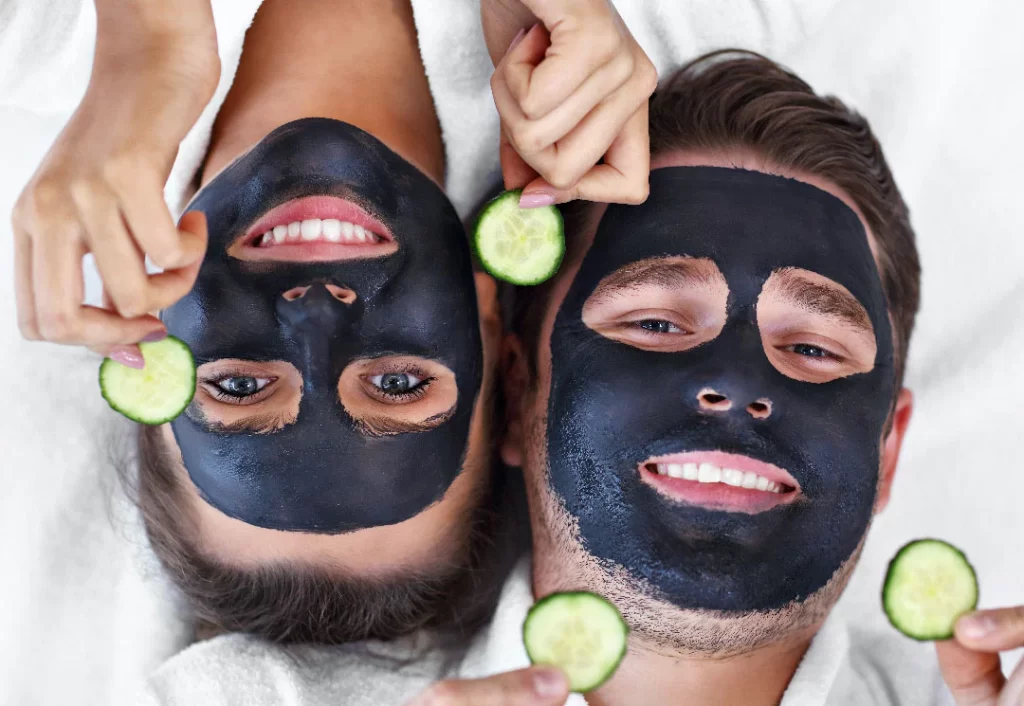
How to Layer Hyaluronic Acid, Niacinamide, and Retinol
In recent years, your skincare routine has transformed from a simple wet washcloth and moisturizer to something akin to a chemistry class. For those who are well-versed in skin care, this chemistry class can be fun, but if you’re new to the field, you might find it as confusing as the periodic table.
Don’t worry, I’m here to help demystify it all. Today I’m focusing on how to layer hyaluronic acid, niacinamide, and retinol.
Does retinol come before or after hyaluronic acid?
When you think about retinol and hyaluronic acid, they both have their own unique benefits for the skin and actually complement each other very well. There’s also a key difference in the way the two ingredients are applied to the skin. What I mean by this is that hyaluronic acid loves water. Leaving your skin slightly damp after cleansing activates the hydrating properties of hyaluronic acid. This causes the moisture on the skin to be drawn into the lower layers and trapped there, resulting in a radiant, healthy, and comfortable complexion.
As for retinol, this powerful substance must be applied to dry skin i.e. h. before applying hyaluronic acid or about 20 minutes between applications to allow for adequate time to absorb into the skin. Regardless of how you choose to use each ingredient, they both target problem areas and work together to keep the skin’s surface balanced and hydrated.
Can Niacinamide and Hyaluronic Acid be layered?
Absolutely! Both Niacinamide and Hyaluronic Acid provide a significant amount of moisture to the skin. You’ll find that both have the ability to bind and lock in moisture, which helps keep the skin barrier healthy and fights signs of free radical damage caused by UV rays and other environmental aggressors.
When combining these two ingredients, it’s best to apply Hyaluronic Acid first, as it binds a significant amount of water to provide continuous hydration to the skin throughout the day. Then apply Niacinamide, as it regulates the skin’s sebum production and keeps it balanced.
How to layer Retinol and Hyaluronic Acid?
If you’ve read any of our previous blog posts, you’ll know the general rule of thumb for how to layer different skincare products and ingredients. The best approach is to work your way up from the thinnest formula to the thickest, gradually adjusting the consistency.
This is important to keep in mind if you want to layer retinol and hyaluronic acid. For example, you would apply your serum first, then your facial oil, and finally your moisturizer. By following this skin rule, you’ll find that each ingredient can work to its full potential without worrying about irritation or preventing the effective formula from reaching its best skin results.
Can I use retinol after niacinamide?
You can apply retinol after niacinamide if you allow enough time between applications. Applying niacinamide first will protect your skin from the drying effects that retinol typically causes. You’ll also find that once your skin is moisturized, the retinol will be absorbed quickly and effectively, reaching the underlying layers and showing results faster.
However, there’s nothing wrong with using both niacinamide and retinol in the same product. The formula may not be as effective as using each ingredient alone, but many people find this more convenient, especially if retinol is new to their daily skincare routine.
What can retinol be used for?
There are a variety of skincare ingredients that can be used with retinol. Moisturizing ingredients like hyaluronic acid, niacinamide, squalene, and vitamin E are considered the best for neutralizing retinol-related irritation. You’ll also find that any ingredients with hydrating properties will help lock moisture into the outer surface, allowing the retinol to penetrate, and with few to no side effects.
The easiest way to remember which substances to avoid is if they have similar skin benefits to any form of retinoids, such as: B. Increased skin cell turnover. Exfoliating ingredients and formulas should be avoided entirely. Chemical peels like AHA glycolic acid and BHAs like salicylic acid, as well as physical peels husks and fruit seeds are too abrasive, irritating the skin and causing irritation, redness, dryness, and general discomfort.
Can I use hyaluronic acid, niacinamide, and retinol?
Both niacinamide and hyaluronic acid are gentle yet effective skincare ingredients. Many users find them easy to use and have no or few side effects. Since retinol is considered one of the most effective ingredients, there are some caveats and rules. When introducing it into your routine. By combining all three ingredients together, you can hydrate the skin, strengthen the skin’s protective barrier and keep it in its healthiest state, and ultimately prevent retinol from drying out and irritating the skin.
If you want to learn more about niacinamide, hyaluronic acid, and retinol, and how this powerful trio works together on your skin, check out our dedicated blog post on using these ingredients in your skincare routine.
Which is better, hyaluronic acid or retinol?
As mentioned before, these two ingredients target different areas of the skin and when combined make for a powerful and skin-rejuvenating combo. Since each ingredient works effectively together, you can be sure that the hydrating properties of hyaluronic acid will offset the drying and peeling side effects of retinol. Similar to niacinamide, hyaluronic acid is another ingredient that can be combined with retinol to really shine. Each skincare hero works to soothe fine lines and wrinkles and boost collagen production for a radiant, healthy-looking, plump complexion.
If the idea of retinol overwhelms you, read our article on what retinol is and what it does for your skin. This will help clear up any confusion, and as always, before adding any new product to your routine, you should first consult with your doctor or dermatologist to ensure it’s safe for you and your skin type.Of course, don’t forget to do a 24-hour patch test before applying it all over your skin to avoid unnecessary irritation.
Follow us on Instagram for more skincare tips and exclusive offers. You can also contact our skincare experts via private message if you have any further questions.


